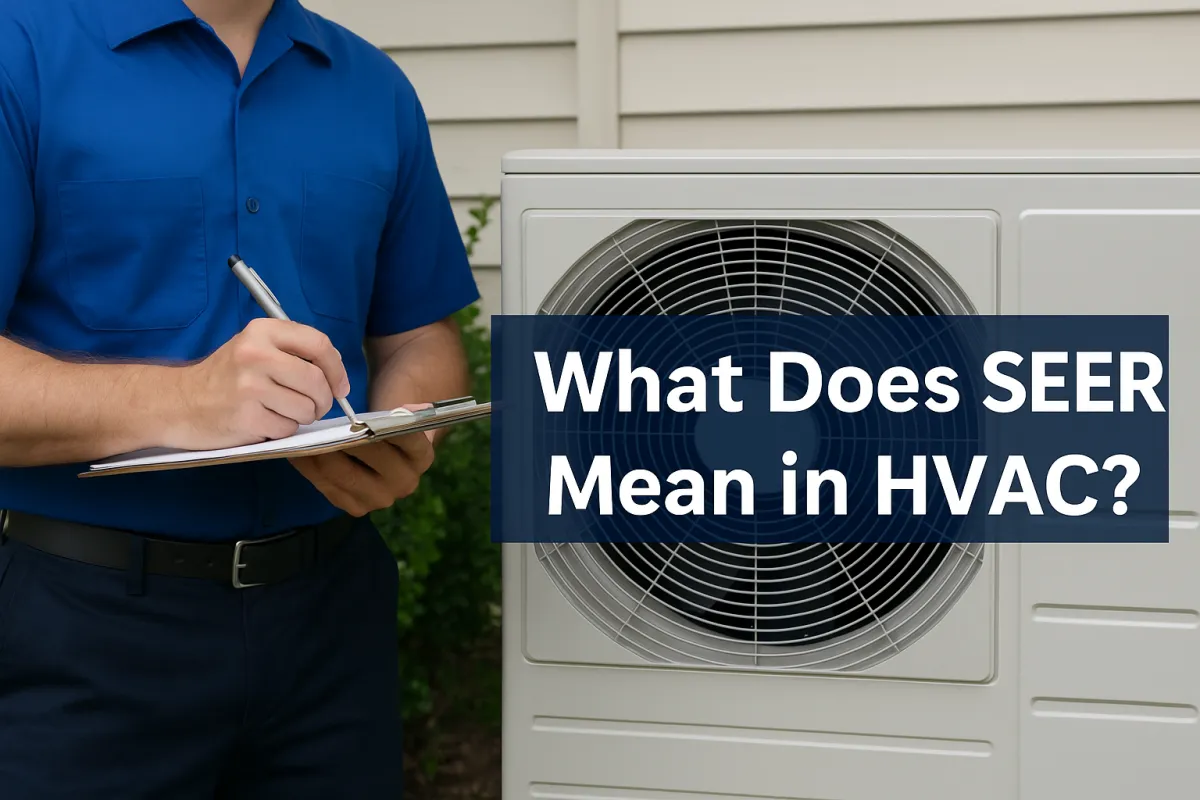
What Does SEER Mean in HVAC? | Trav's Plumbing & HVAC
If you're shopping for a new air conditioner or heat pump, you've probably come across the term SEER rating.
But what does SEER actually mean in HVAC — and why should you care?
In simple terms, SEER stands for Seasonal Energy Efficiency Ratio.
It tells you how efficiently your HVAC system cools your home during the warmer months.
The higher the SEER, the more energy-efficient the unit is — and the less you’ll spend on your utility bills.
Let’s break it down in plain language and help you figure out what SEER (and SEER2) means for your comfort, budget, and your Manitoba home.
What Is SEER Rating?
SEER stands for Seasonal Energy Efficiency Ratio, and it measures how much cooling output (in BTUs) your AC or heat pump provides compared to how much electricity it uses over an entire cooling season.
Think of it like MPG for your HVAC system.
Just like a car with better gas mileage saves you money at the pump, a unit with a higher SEER rating saves you money on your hydro bill.
Quick Example:
If an AC unit has a SEER rating of 16, that means it provides 16 BTUs of cooling for every watt-hour of electricity it uses during the summer months.
What Is a Good SEER Rating?
Here’s a quick cheat sheet:
In Southern Manitoba, where summers can get hot but aren't sweltering year-round, most homeowners find a 16–18 SEER unit gives them a great mix of comfort and savings without breaking the bank.
What Is SEER2 Rating?
You may have seen newer units labeled with SEER2 instead of just SEER.
So, what’s the difference?
SEER2 is the updated version of the SEER rating.
It came into effect in 2023 to reflect more real-world testing conditions — specifically, higher external static pressure, which is a more realistic reflection of how ductwork performs in actual homes.
Key Difference:
SEER was calculated under ideal lab conditions.
SEER2 uses stricter testing, so it gives a better idea of how efficient your unit will be in real life.
If you’re buying a new system now, you’ll likely see SEER2 numbers on the label — and that’s a good thing.
It helps you make a more informed choice.
SEER and Energy Savings: Does It Really Matter?
Yes — especially over time.
Here’s what higher SEER ratings can mean for you:
Lower hydro bills: More cooling with less electricity.
Better home comfort: Higher SEER units often come with variable-speed fans or compressors for steadier temps.
Possible rebates: Some high-efficiency systems qualify for local or federal rebates — it’s worth checking with Manitoba Hydro.
Smaller carbon footprint: Great if you're trying to go greener at home.
Let’s say you upgrade from a 13 SEER to a 17 SEER system — you could save hundreds of dollars each year, depending on your usage.
SEER vs SEER2: What’s the Big Deal?
Here’s a side-by-side look to make it easy:
Bottom line: SEER2 is the future.
If you're buying a new HVAC system in 2024 or beyond, go by SEER2 numbers.
How to Choose the Right SEER Rating for Your Home
Choosing the right SEER rating isn't just about grabbing the highest number.
You’ll want to think about:
Your budget (higher SEER = higher upfront cost)
How often you use AC (more use = more savings with higher SEER)
The size and insulation of your home
Whether you plan to stay in your home long-term
Not sure what’s best?
That’s where we come in.
At Trav’s Plumbing & HVAC, we help homeowners across Southern Manitoba choose the right system based on real-world factors — not just sticker numbers.
Whether you’re replacing an older unit or planning a brand-new install, we’ll walk you through your options.
Ready to Make Sense of SEER?
Choosing the right HVAC system can feel overwhelming, but it doesn't have to be.
If you're in Southern Manitoba, our team at Trav’s Plumbing & HVAC is here to help you pick the right SEER or SEER2-rated system for your home and budget.
Need help figuring it out? Contact us today for a free quote or system consultation.
FAQs About SEER Ratings
What is a good SEER rating for Canada?
In most Canadian climates, a 16 to 18 SEER unit is a solid choice. It balances efficiency and cost without going overboard for a shorter cooling season.
Does a higher SEER rating really make a difference?
Yes, especially if you run your AC often. Higher SEER means lower energy use and more comfort.
What is SEER2 rating and why does it matter?
SEER2 is the newer version of SEER that better reflects how your system performs in real homes — not just lab conditions.
Is a 14 SEER unit enough?
It’s the minimum for older systems, but if you’re buying new, go higher. You’ll save more in the long run.
Should I upgrade from 14 to 18 SEER?
If your budget allows and you use your AC frequently, yes — you’ll likely see lower hydro bills and better performance.
